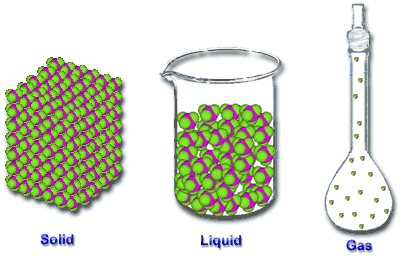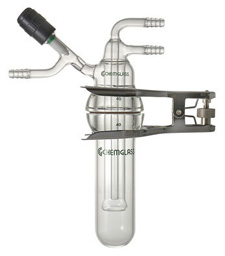



Find all of your laboratory and workplace safety supplies at Safety Emporium!
 Useless MSDS Abbreviations |
 Glossary Index |
 Vapor Pressure |
| MSDS Topics |
Free Sites | FAQ's | Regulations | Glossary | Software | Suppliers |
| Books | Forum | Poll | Fun stuff | Quiz | Store | |
| Understand your MSDS with the MS-Demystifier | Search ALL our MSDS info | |||||
A vapor refers to a gas-phase material that that normally exists as a liquid or solid under a given set of conditions. As long as the temperature is below a certain point (the critical temperature; this varies for each substance), the vapor can be condensed into a liquid or solid with the application of pressure.
The most common example of a vapor is water vapor (gas phase water) at room temperature and one atmosphere of pressure. Do not confuse a vapor with a dust, a fine suspension of solid particles or a mist, a fine suspension of liquid droplets. A good synonym (alternate word) for vapor is gas.
When a substance turns changes from a solid or liquid into a gas, the process is called vaporization. The material is said to vaporize or evaporate.

Store and dispense flammable liquids safely with flammable liquid safety cans from Safety Emporium.
We can classify most materials as solids, liquids or gases. The primary distinction between these phases deals with the attractions/forces between the atoms or molecules that make up the material.
We can express these states of matter pictorially. Of course, the molecules are shown millions of times their actual size:

It is quite common for materials to undergo phase transitions, i.e. a change between one state and another. For example, solids can melt to give liquids; the reverse process is freezing. Liquids can evaporate into gases; the reverse process is called condensation. Solids can sublime to give gases without ever forming a liquid; the reverse process is called deposition.
This term is quite common on SDS's and usually refers to hazards associated with the vapor phase of the material. Such hazards appear in Section 2 (Hazard(s) identifications) and the physical properties of the substance appear in Section 9 (physical and chemical properties). Many vapors present both physical and chemical hazards. Substances that have high vapor pressures generate significant amounts of vapors. If these are asphxiants, flammable, and/or toxic, that can be bad news!
Always use proper personal protective equipment (PPE) such as respirators and/or engineering controls such as fume hoods when working with hazardous vapors. If possible, avoid conditions which generate such vapors in the first place. Remember that vapors can travel a long distance from their point or origin, and that some heavier-than-air vapors may tend to collect in small areas.

You can get cryogenic sublimators and other lab glassware from Safety Emporium.
See also: boiling point, dust, fume, mist, vapor pressure.
Additional definitions from Google and OneLook.
Entry last updated: Sunday, February 6, 2022. This page is copyright 2000-2025 by ILPI. Unauthorized duplication or posting on other web sites is expressly prohibited. Send suggestions, comments, and new entry desires (include the URL if applicable) to us by email.
Disclaimer: The information contained herein is believed to be true and accurate, however ILPI makes no guarantees concerning the veracity of any statement. Use of any information on this page is at the reader's own risk. ILPI strongly encourages the reader to consult the appropriate local, state and federal agencies concerning the matters discussed herein.